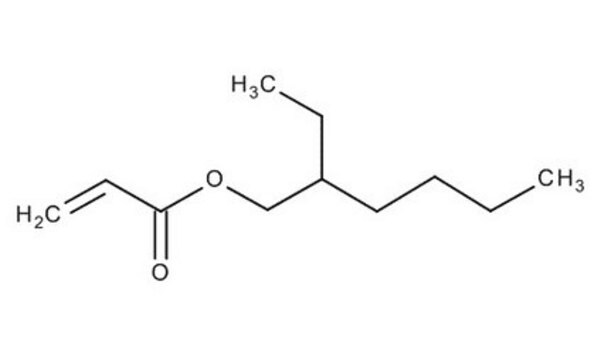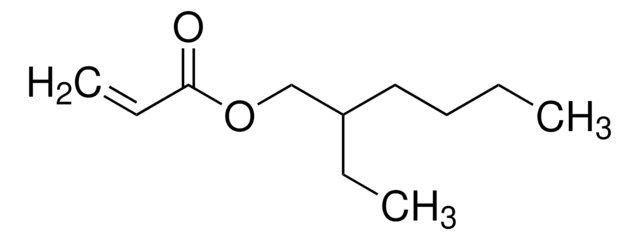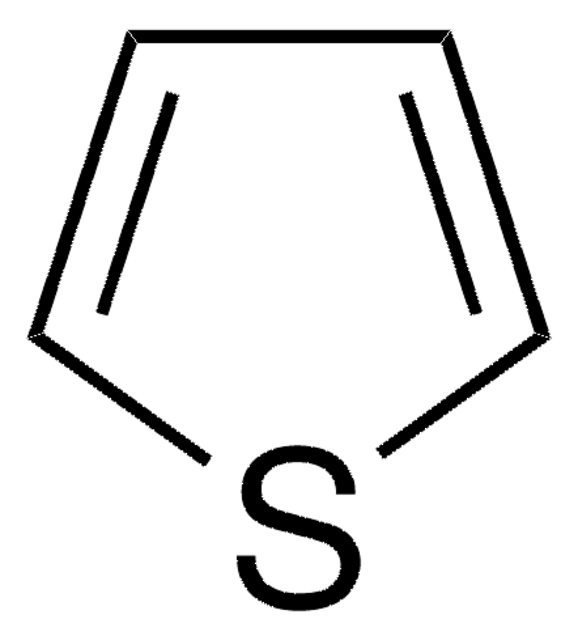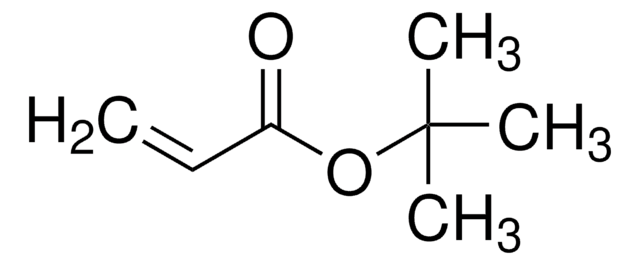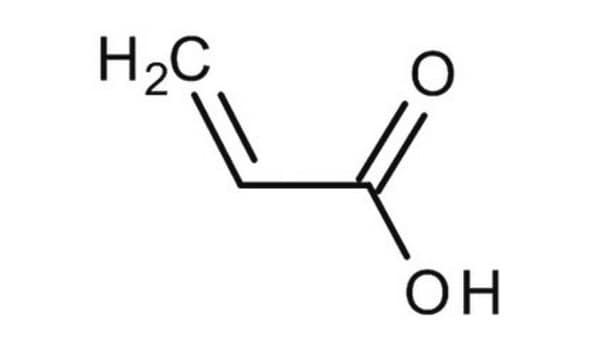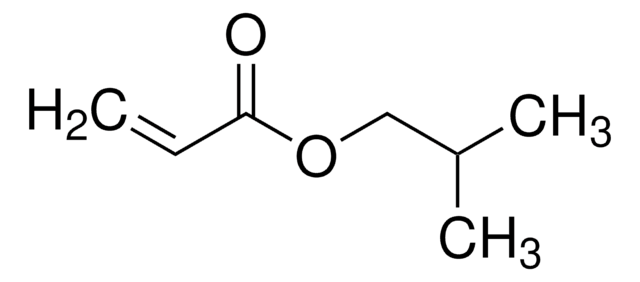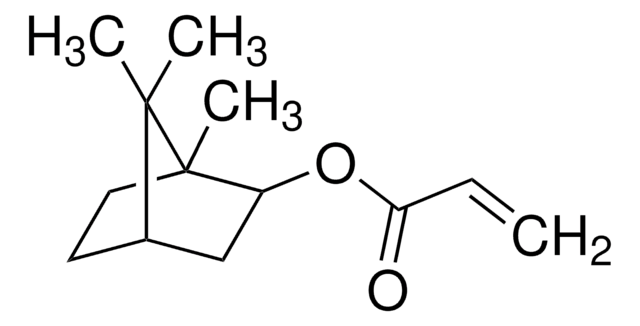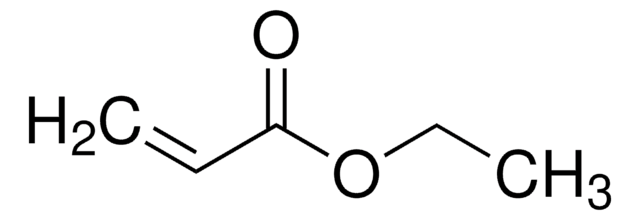290815
2-Ethylhexyl acrylate
98%, contains ≥0.001-≤0.11% monomethyl ether hydroquinone as stabilizer
Synonym(s):
(±)-Acrylic acid 2-ethylhexyl ester
About This Item
Recommended Products
vapor density
6.4 (vs air)
vapor pressure
0.15 mmHg ( 20 °C)
assay
98%
autoignition temp.
496 °F
contains
≥0.001-≤0.11% monomethyl ether hydroquinone as stabilizer
expl. lim.
6.4 %
refractive index
n20/D 1.436 (lit.)
bp
215-219 °C (lit.)
density
0.885 g/mL at 25 °C (lit.)
SMILES string
CCCCC(CC)COC(=O)C=C
InChI
1S/C11H20O2/c1-4-7-8-10(5-2)9-13-11(12)6-3/h6,10H,3-5,7-9H2,1-2H3
InChI key
GOXQRTZXKQZDDN-UHFFFAOYSA-N
Looking for similar products? Visit Product Comparison Guide
Related Categories
General description
Application
- Formulation optimization and stability study of transdermal therapeutic system of nicorandil.: This research explores the formulation and stability of a transdermal therapeutic system using 2-ethylhexyl acrylate (2-EHA) as a key component, highlighting its potential in delivering drugs through the skin effectively (Tipre DN et al., 2002).
signalword
Warning
hcodes
Hazard Classifications
Aquatic Chronic 3 - Skin Irrit. 2 - Skin Sens. 1 - STOT SE 3
target_organs
Respiratory system
Storage Class
10 - Combustible liquids
wgk_germany
WGK 1
flash_point_f
174.2 °F - closed cup
flash_point_c
79 °C - closed cup
ppe
Eyeshields, Faceshields, Gloves, type ABEK (EN14387) respirator filter
Certificates of Analysis (COA)
Search for Certificates of Analysis (COA) by entering the products Lot/Batch Number. Lot and Batch Numbers can be found on a product’s label following the words ‘Lot’ or ‘Batch’.
Already Own This Product?
Find documentation for the products that you have recently purchased in the Document Library.
Customers Also Viewed
Our team of scientists has experience in all areas of research including Life Science, Material Science, Chemical Synthesis, Chromatography, Analytical and many others.
Contact Technical Service
